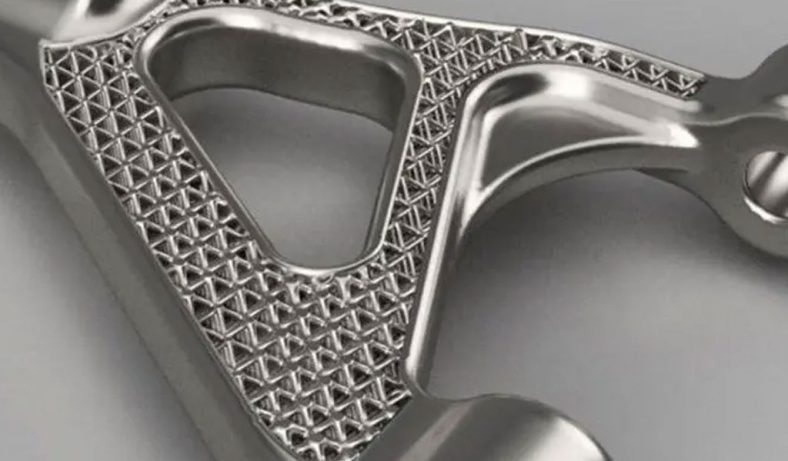
Machining centers are a critical component of modern manufacturing, providing precision and efficiency in the production of various components and products. However, poor rigidity can significantly hamper their performance, leading to subpar results and increased operational costs.
In this comprehensive article, we will delve into the various factors that cause poor rigidity in machining centers and provide practical solutions for addressing these issues. By understanding the root causes and implementing effective fixes, manufacturers can optimize their machining processes and achieve superior quality output.
What Causes Poor Rigidity Of Machining Center
Poor rigidity in a machining center can lead to various issues such as reduced machining accuracy, poor surface finish, and decreased tool life. Several factors can contribute to poor rigidity in a machining center:
- Machine Structure and Design: The design and construction of the machining center play a significant role in its rigidity. Machines with a less robust or rigid structure are more prone to vibrations and deflections during machining, which can affect accuracy. High-quality machining centers are typically designed with a focus on rigidity to minimize these issues.
- Material and Build Quality: The quality of materials used in the construction of the machining center can impact its rigidity. Inferior materials or manufacturing processes can result in a machine that is more susceptible to deformation and vibration.
- Wear and Tear: Over time, wear and tear on various components of the machine, such as guideways, ball screws, bearings, and spindle, can lead to reduced rigidity. Regular maintenance and proper lubrication are essential to prevent premature wear and maintain rigidity.
- Toolholder and Workholding: The toolholder and workholding devices used in the machining center must be properly aligned and secured. Any misalignment or insufficient clamping force can cause vibrations and reduce rigidity.
- Cutting Tools and Toolholders: The choice of cutting tools and toolholders can affect machining rigidity. Inadequate tool stiffness, tool runout, or improper tool selection can lead to poor rigidity during cutting operations.
- Cutting Parameters: Machining parameters such as cutting speed, feed rate, and depth of cut must be selected appropriately for the material being machined and the capabilities of the machine. Running the machine at excessive speeds or feeds can lead to increased vibrations and reduced rigidity.
- Workpiece Material: The material being machined can also impact rigidity. Harder materials may place greater demands on the machine’s rigidity, and adjustments may be needed in terms of tooling and cutting parameters.
- Tool Path and Toolpath Programming: Inefficient or poorly programmed tool paths can lead to sudden direction changes and excessive tool engagement, resulting in vibrations and reduced rigidity. Optimizing tool paths can help mitigate this issue.
- Foundation and Installation: The foundation on which the machining center is installed must be solid and properly leveled. Inadequate foundation or improper installation can lead to machine instability and reduced rigidity.
- External Factors: Environmental factors, such as temperature fluctuations and humidity, can also affect machine rigidity. Extreme conditions can lead to thermal expansion or contraction, impacting the machine’s stability.
To address poor rigidity in a china cnc machining center, it is crucial to perform regular maintenance, invest in quality equipment, choose appropriate cutting tools and parameters, and ensure proper machine setup and alignment. Additionally, upgrading to a more rigid machine or retrofitting existing equipment may be necessary in some cases to achieve the desired level of rigidity for specific machining tasks.
How To Fix
Fixing poor rigidity in a machining center involves a combination of maintenance, adjustments, and potentially equipment upgrades. Here are steps you can take to address and improve rigidity:
Regular Maintenance:
- Perform routine maintenance checks according to the manufacturer’s recommendations.
- Ensure that all components, such as guideways, ball screws, bearings, and spindle, are properly lubricated and in good condition.
- Replace worn or damaged parts promptly.
Alignment and Calibration:
- Check and recalibrate the machine’s geometry, including axes alignment and squareness.
- Ensure the toolholder and workholding devices are properly aligned and clamped securely.
Tooling and Toolholders:
- Choose high-quality cutting tools and toolholders with sufficient stiffness and precision.
- Check tool runout and replace worn or damaged tools and toolholders.
Cutting Parameters:
- Optimize cutting parameters, such as cutting speed, feed rate, and depth of cut, for the material and machine capabilities.
- Avoid running the machine at speeds and feeds that induce excessive vibrations.
Toolpath Optimization:
- Review and optimize toolpaths in your CAM (Computer-Aided Manufacturing) software to reduce sudden direction changes and minimize tool engagement fluctuations.
- Use adaptive toolpath strategies that maintain a consistent load on the tool.
Workpiece Material and Fixturing:
- Choose appropriate cutting strategies and tooling for the specific workpiece material.
- Ensure workpiece fixturing is secure and well-supported to minimize vibrations.
Foundation and Environment:
- Verify that the machine is installed on a stable and level foundation.
- Control environmental factors like temperature and humidity to reduce the impact of thermal expansion or contraction.
Upgrades or Retrofitting:
- If your machining center’s rigidity issues persist despite maintenance and adjustments, consider upgrading to a more rigid machine.
- Retrofitting older machines with modern components and technology may also improve rigidity.
Consult Manufacturer or Experts:
- Contact the machining center’s manufacturer or a machine tool expert for guidance on specific issues or upgrades.
- They can provide recommendations based on your machine’s make and model.
Operator Training:
Ensure that machine operators are well-trained in machine operation, tool setup, and maintenance procedures.
Remember that fixing rigidity issues may require a combination of the above steps, and it may take some trial and error to achieve the desired results. Regular monitoring and maintenance are essential to maintaining rigidity over time.
